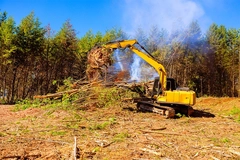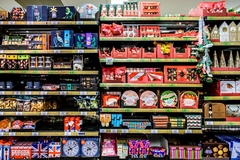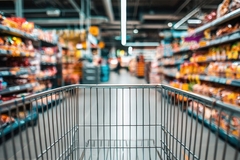
- Industry news
Industry news
- Category news
Category news
- Reports
- Key trends
- Multimedia
- Journal
- Events
- Suppliers
- Home
- Industry news
Industry news
- Category news
Category news
- Reports
- Key trends
- Multimedia
- Events
- Suppliers
Restricted movement: Food security concerns accelerate during coronavirus

19 Mar 2020 --- Restrictions on the movement of people, goods, services and containment measures, such as factory closures, due to COVID-19 have cut manufacturing and domestic demand sharply in China. In light of the pandemic, experts forecast that the global clampdown on the circulation of goods and citizen’s mobility will continue to weigh down upon world markets, should they persist. Already in Europe, industry stakeholders have begun voicing concerns about prolonged trade bottlenecks caused by tightened border control.
“Following the important and necessary emergency measures taken by EU Member States, our members are reporting increasing difficulties in their business operations,” warns a joint statement by European food bodies FoodDrinkEurope, European Liaison Committee for the Agriculture and Agri-Food Trade (CELCAA), and Copa-Cogeca.

As previously reported on FoodIngredientsFirst, Italian industry reps voiced concerns that food excellence may “fall into the eye of the hurricane” as the virus continues its spread out of China.
“Delays and disruption at country borders have been observed for the delivery of certain agricultural and manufactured products, as well as packaging materials. There is also concern over the movement of workers, notably due to certain border closures and travel restrictions, as well as potential labor shortages as staff follow national movement restrictions to mitigate the crisis,” the European associations outline.
Given that the agri-food supply chain is highly integrated and operating across borders, any blocks of supply and workers will inevitably disrupt business, the agri-food chain stakeholders emphasize. “Our ability to provide food for all will depend on the preservation of the EU Single Market.”
“We therefore urge the European Commission to work collaboratively with us and to do everything in its power – with a consistent and clear strategy – to ensure an uninterrupted flow of agricultural produce, food and drink products and packaging materials (e.g. through “green lanes”), as well as solutions to prevent and manage labour shortages, so that the food supply chain is able to function effectively,” they conclude.
 “Considering the agricultural sector contributes to about 7 percent of the GDP in China, the impact of COVID-10 on China’s overall economy would equally affect the agricultural and food security sector,” says Marchisio.Restarting the agriculture economy
“Considering the agricultural sector contributes to about 7 percent of the GDP in China, the impact of COVID-10 on China’s overall economy would equally affect the agricultural and food security sector,” says Marchisio.Restarting the agriculture economy
As read in previous FoodIngredientsFirst coverage, COVID-19 concerns contributed to a significant World Food Price dip in February. The restrictions on movement of people and factory closures implemented by the Chinese government had an impact on the circulation, and thus availability, of food and agricultural products, and the interruption of several value-chains, with a potential impact on prices. The closure of entertainment venues and restaurants in affected regions has remained a prominent challenge.
“Considering the agricultural sector contributes to about 7 percent of the GDP in China, the impact of COVID-10 on China’s overall economy would equally affect the agricultural and food security sector. In this regard, we can anticipate both a shorter-term immediate impact, and a longer-term impact – which potentially can have global consequences,” says Matteo Marchisio, Country Director and Representative in China and Mongolia at International Fund for Agricultural Development (IFAD).
Marchisio stresses that the longer the situation persists and the longer the restrictive measures continue, the more stress would be exerted on global systems, with consequent longer-lasting and deeper impacts on food availability, prices and ultimately overall food security. “If circulation of people is not re-established soon, food stocks are destined to decrease and prices to increase.
“China needs to restart the economy – including the food industry, from production to distribution, whenever possible, as soon as possible. The immediate constraints to the movement of people and goods need to be removed where possible, so that farming can re-start and the food-supply chains re-established without major delays,” he stresses.
Counterintuitively, however, Marchisio observes that despite the limited circulation of goods, food supply in China has overall remained stable. With limited exceptions, food prices in the country have remained overall stable as well. “This can be probably attributed to the large availability of food stocks at the time of the outbreak, when movement restriction measures began to be implemented.”
March is notably the beginning of the planting season in many provinces of China. “If, because of the movement restrictions, the planting season is missed or delayed, this year’s production would likely suffer, internal food demand would likely not be met and pressure on agricultural imports will increase – with consequences on global food availability and food prices,” explains Marchisio.
The risk of ending up facing a situation similar to that of the food crisis in 2008 is underscored by Marchisio as “a possibility not to be completely overlooked.” He notes that Chinese leaders are aware of the potential risk, giving early resumption of agricultural production high priority.
Pressingly, he further concludes that low-income countries would have limited fiscal space to implement safety-nets that could reduce the impact of COVID-19 to the most vulnerable part of their societies, which includes the limiting of access to a sufficient quantity of affordable food.
“Even in the likely case China will not experience food shortages, global food security could be challenged if, as a consequence of the spreading of the COVID-19 globally, other countries will start experiencing stress on their agricultural production capacity and circulation of food – particularly developing countries,” he warns.
By Benjamin Ferrer










